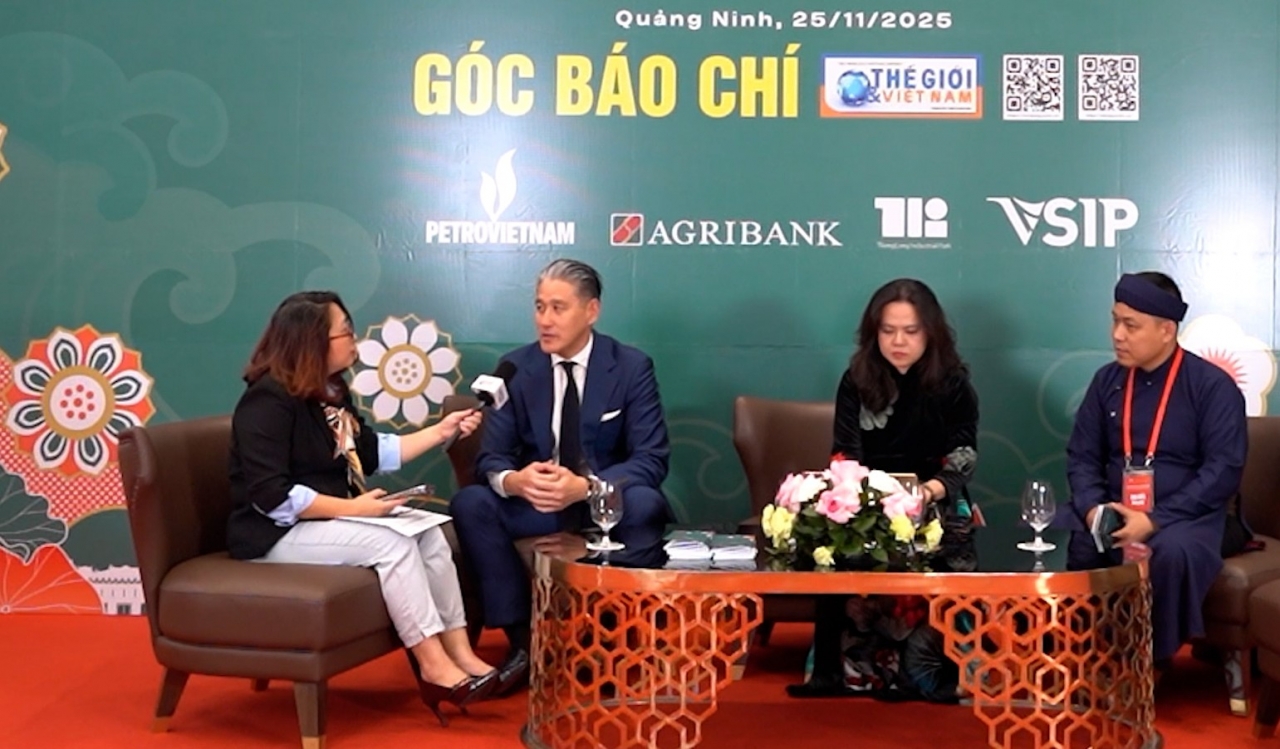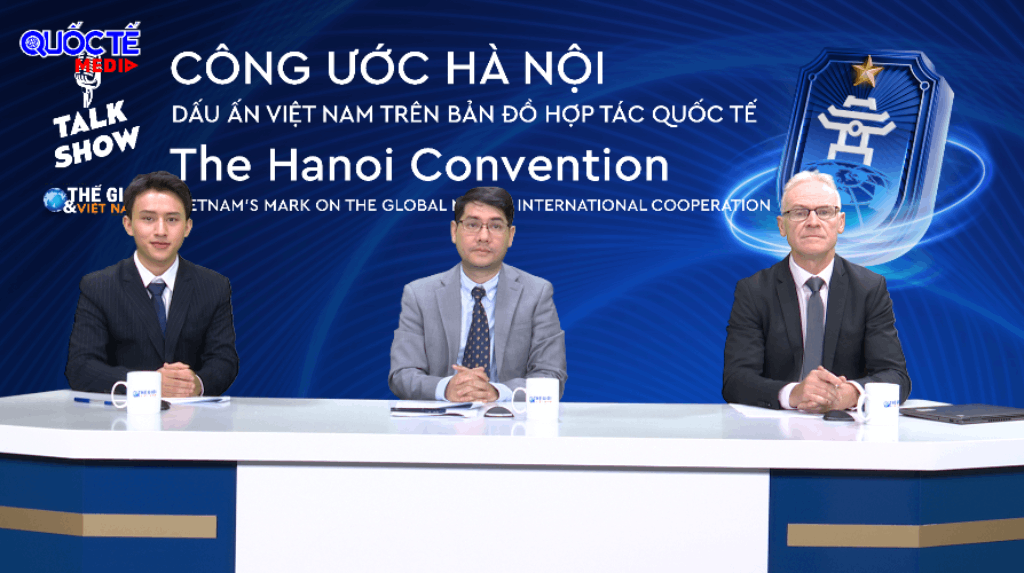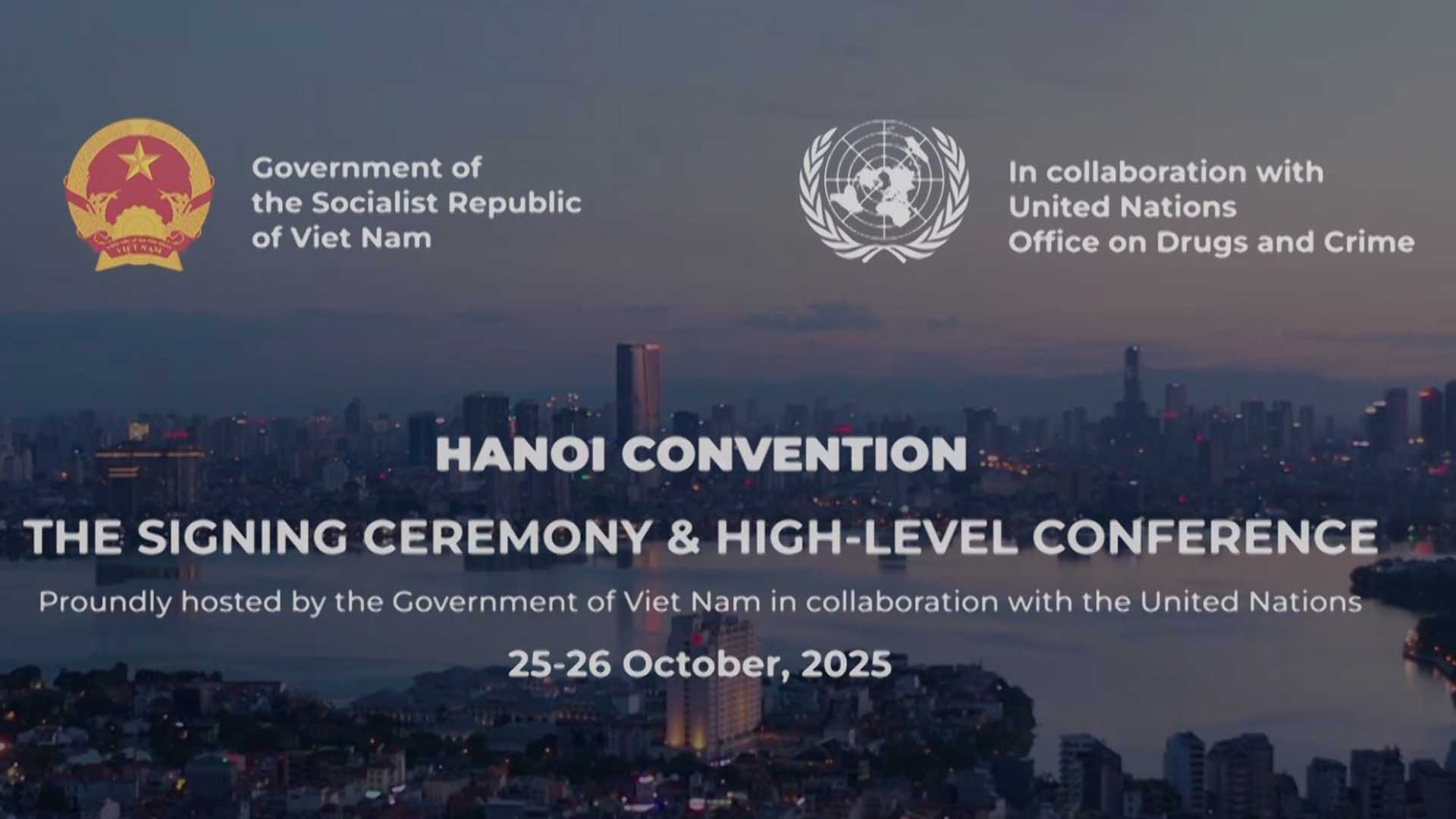
Shared visions, aligned goals: China and Vietnam's path to a stronger community of shared future
Latest
 |
| General Secretary To Lam and General Secretary and President of China Xi Jinping walk from the Presidential Palace to the Central Party Office. (Photo: Nguyen Hong) |
The visit carried substantial significance for both nations and the broader region, particularly at a time when global dynamics are shifting rapidly. The outcomes of the visit have opened new areas of collaboration, fortified existing commitments, and set a clear direction for the coming years.
Building political trust through high-level exchanges
Trust lies at the core of any bilateral relationship, and for two neighboring socialist countries governed by communist parties, cultivating political trust carries particular weight. General Secretary, President of China Xi’s state visit underscored high-level interaction as a key channel for strengthening this trust. During the visit, both sides affirmed their dedication to increasing visits among top Party and Government leaders, as well as enhancing inter-party dialogues. The 2025 Joint Statement places greater emphasis on mutual support in safeguarding each nation’s core interests and on intensifying cooperation in governance.
Frequent top-level exchanges between China and Vietnam not only boost confidence but also reinforce the notion that constructive relationships can be anchored in shared political values. Both parties benefit from a sense of assuredness about each other’s long-term objectives. Through this state visit, leaders agreed to establish additional forums for Party-to-Party discussions. They also revisited mechanisms for policy coordination. Such coordination reduces the likelihood of misunderstanding and contributes to regional predictability. By drawing on their shared socialist heritage, China and Vietnam signaled that they aim to shape a stable environment conducive to their domestic and regional priorities. This political trust, built on respect for sovereignty and core interests, now stands on firmer ground.
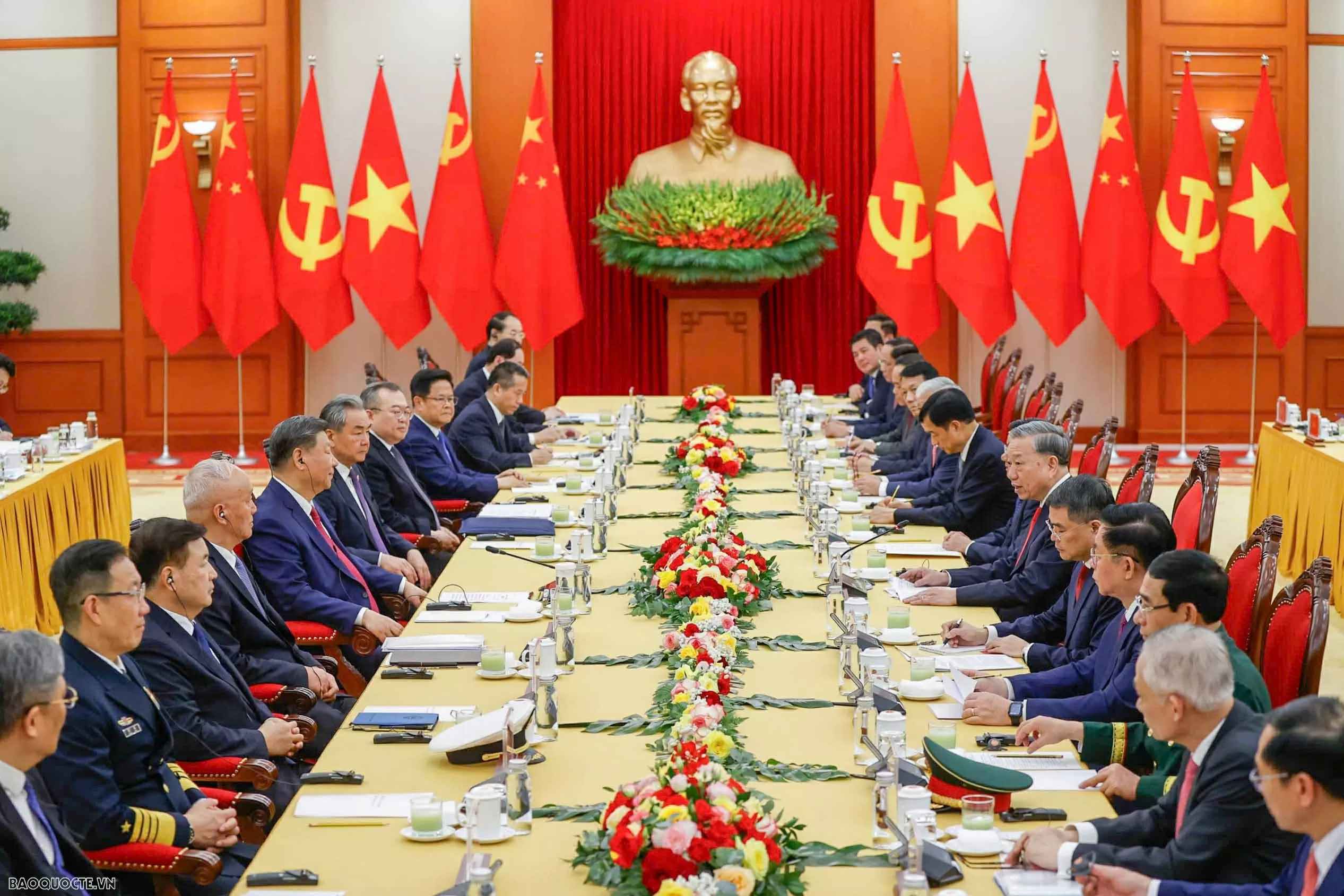 |
| General Secretary To Lam holds talks with General Secretary and President of China Xi Jinping. (Photo: Nguyen Hong) |
Aligning development strategies for national goals
Economic growth strategies have long been central to Vietnam-China relations. On one hand, Vietnam’s “Two Corridors, One Belt” Framework continues to serve as a strategic guide for the country’s economic development. On the other hand, China’s Belt and Road Initiative (BRI) sets out grand plans for infrastructure connectivity across Asia and beyond. During General Secretary, President Xi’s recent visit, both sides reiterated their willingness to coordinate these frameworks. The 2025 Joint Statement elevates this intention, introducing clearer timelines, benchmarks, and special financial mechanisms for projects related to roads, railways, and ports, among other infrastructure endeavors.
The two sides stressed the importance of connecting industrial and logistical chains, creating synergies between China’s vast market and Vietnam’s growing industrial capacity. Leaders expressed mutual appreciation for the idea that aligned strategies foster shared prosperity. Vietnam’s aim of becoming a high-middle-income economy within the next decade appears more attainable. The centenary goals of each country—China’s aim for national rejuvenation and Vietnam’s ambition to continue its Doi Moi-inspired modernization—provide overarching missions that guide cooperation. This year’s statement gives a clearer road map on how the two neighbors might navigate the path to those centenary milestones together.
Deepening economic and trade cooperation in a challenging global environment
Robust economic and trade relations are pillars of any cooperation agenda. The conversations held during General Secretary, President Xi’s visit pointed to untapped potential in bilateral trade, investment, and technology transfer. The 2025 Joint Statement underscores the importance of facilitating market access, improving customs clearance procedures, and broadening the range of goods and services traded.
This renewed pledge to bolster trade takes place against a global backdrop shaped by unilateral economic policies, especially from the United States. Many emerging economies in Southeast Asia face challenges from export restrictions, fluctuating currency markets, and tightening conditions for foreign investment. Vietnam’s rise as a manufacturing hub exemplifies the region’s efforts to grow despite such external pressures. Both Beijing and Hanoi expressed readiness to protect their developmental interests through mutual assistance.
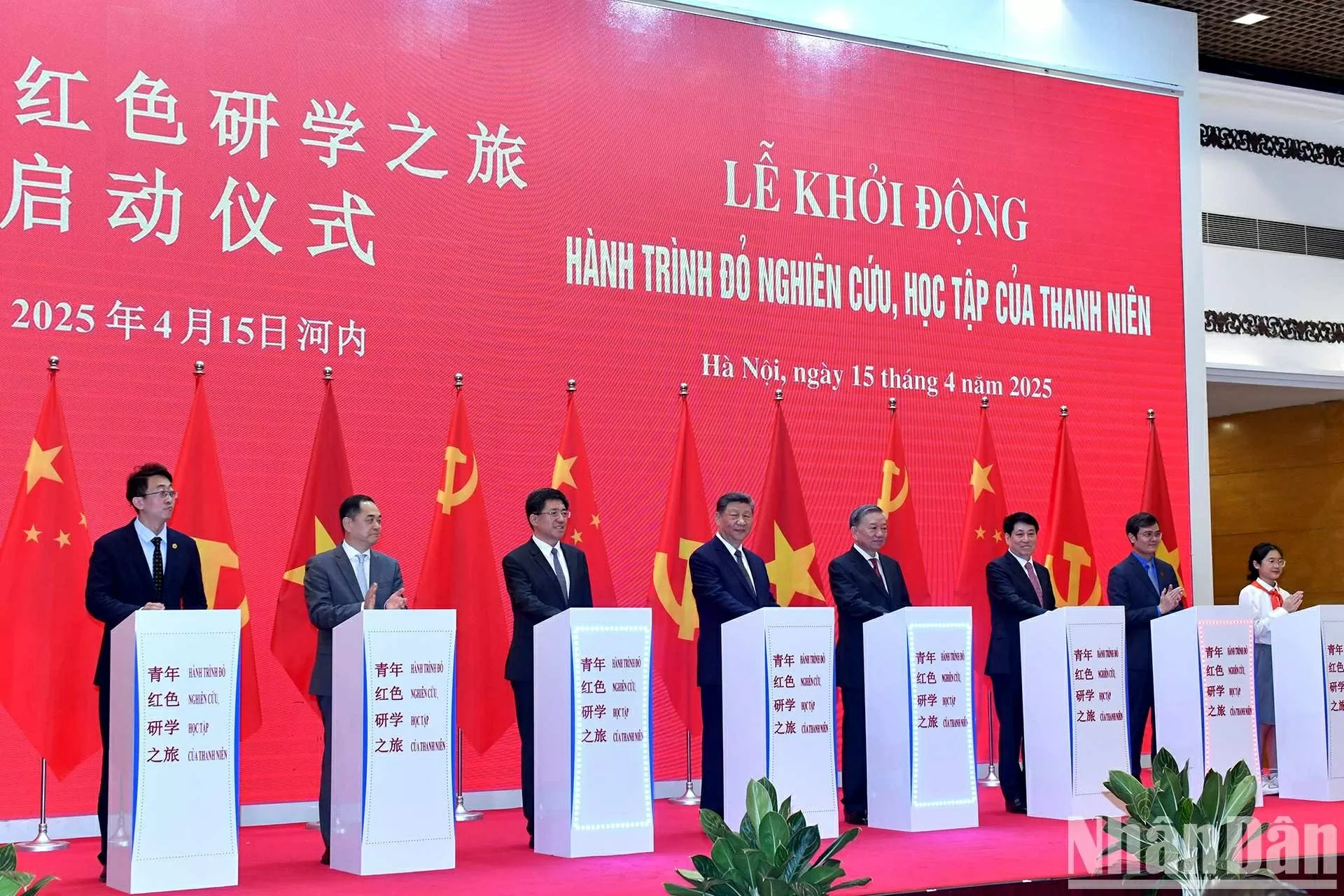 |
| General Secretary To Lam and General Secretary and President of China Xi Jinping and delegates launched the Red Journey project for research and study of Vietnamese-Chinese youth. (Source: Nhan Dan Newspaper) |
The latest statement hints at collaborative frameworks that could support Southeast Asian supply chain resilience and promote fair, rules-based trade practices. This has relevance for ASEAN-wide cooperation. By aiming to enhance connectivity between their industrial chains, China and Vietnam also contribute to a sense of collective endurance in the region.
China and Vietnam Year of humanistic exchanges
2025 marks the “China and Vietnam Year of Humanistic Exchanges.” The Joint Statement introduced specific plans for this initiative, which covers cultural events, educational exchanges, and tourism programs. The text highlights youth-focused programs and sister-city relationships, pledging more scholarships for Vietnamese students in Chinese universities and more visiting fellowships for Chinese researchers in Vietnamese institutions.
There is evident momentum for deepening interpersonal links. In recent years, cross-border travel has grown, and many families on both sides of the border share historical and cultural ties. As traveling becomes easier, more individuals see potential in learning about each other’s cultures and languages. Enhanced people-to-people interaction might lead to stronger bonds that support intergovernmental policies. It can also cushion political frictions by fostering better mutual understanding. This yearlong emphasis seeks to expand the cultural and educational space where Chinese and Vietnamese citizens can build friendships. The promise is that these relationships will become a stabilizing factor for the sustainability of bilateral ties.
 |
| Children wave flags to welcome General Secretary and President of China Xi Jinping. (Photo: Nguyen Hong) |
Conclusion
The outcome of General Secretary, President of China Xi Jinping’s state visit to Vietnam signals a commitment to deepening cooperation that reinforces a community of shared future for China and Vietnam. The heightened trust and practical initiatives in the 2025 Joint Statement stand as evidence that both nations view their destinies as intertwined. Their journey forward promises opportunities for common development and for a more stable, cooperative environment in Southeast Asia. This is a clear progression toward not only a broader scope of engagement but also a more tangible roadmap for sustained collaboration. Both countries have thus shaped a forward-looking blueprint that could resonate well into the coming decades.
* Mr. Pan Deng, a CGTN Anchor, shared his reflections with "The World and Vietnam Report" on the outcomes of General Secretary, President of China Xi Jinping’s state visit to Vietnam.







